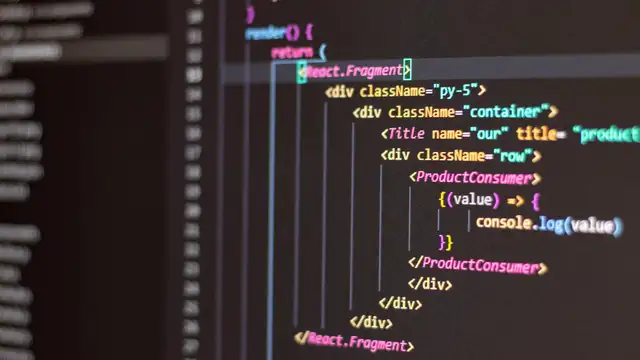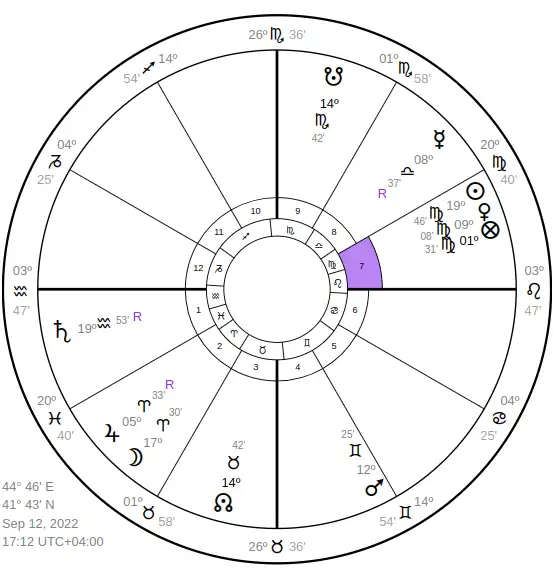Radicality analysis in the OLGA astroprocessor

sep 13, 2022 Astroprocessor OLGA
There are not many techniques in the arsenal of the horary chart with which it can show the motives of the querent. Let's list them.
N.B. If this is your first time encountering the notion of querent-based radicalism, read this article.
Selection by reception
The reception shows what the querent is involved in and what occupies his thoughts and feelings.
The planets ruling mind or heart of the querent will indicate what is important to the querent.
For example, if the ruler of the ASC is in Pisces and the Moon is in Gemini, then they are ruled by Jupiter, Mercury and Venus. So houses ruled by Jupiter, Mercury, or Venus will indicate what is occupying the thoughts and feelings of the querent at the moment.
The astroprocessor "OLGA" determines the rulers of the querent by major receptions and the houses they rule.
Look at the chart below:

Fig. A horary chart
Saturn is in the power of himself (ruler of the 1st and 12th houses). The Moon is ruled by Mars (ruler of the 9th and 10th houses) and the Sun (7th house).
Note 1. A planet in a horary chart can have one and only one meaning. If we see that Saturn (querent) is in the power of Saturn (ruler of the 12th house) and we want to assign Saturn the role of the 12th house (fears, secret enemies, etc.), then we automatically take away Saturn from the querent.
If the chart settings indicate that we leave the 1st house to the querent, then we must ignore Saturn as the ruler of the 12th house.
Note 2. If the querent's planet is close to the house's cusp, it is almost always in the same sign as the cusp.
It means the dispositor of the querent and the ruler of the house will be the same. So, in our example, Saturn is in Aquarius, and the cusp of the 1st house is in Aquarius. So they have a common dispositor - the ruler of the house itself. This situation happens almost always.
On the other hand, a planet in a house, by definition, makes that house stand out simply by its position (see radicality below). It means that a planet in a house will almost always highlight that house twice. It will do it once by the reception, once by the position. But this is an automatic double.
To avoid it, we will ignore the planet's dispositor if the planet near the cusp and the cusp itself is in the same sign.
In our example, out of four houses (1, 12, 9, 10, and 7), we must "delete" the 1st and 12th houses from the count.
- We strike out the 12th house as Saturn is already busy with the querent and cannot play any other role.
- We cross out the 1st house because the planet of the querent is in the same sign as the cusp. As described in the next paragraph, Saturn will highlight the first house by its position.
It is this analysis that the astroprocessor produces at lightning speed. Look:
| Querent | Planets | Considered houses | Ignored houses |
|---|---|---|---|
| Sat. | Sat. | H12, H1 | |
| Лун. | Sun, Mar. | H7, H9, H10 |
The position of the planet of the querent in the house
There is an old rule. If the person's significator is in a particular house, this indicates a great interest of this person in the affairs of this house. In particular, concerning the querent:
The house where the ruler of the ASC or the Moon is will show an object or circumstance currently of great importance to the querent.
Astroprocessor "OLGA" analyzes the position of planets in houses. Here's what it looks like:

Fig. Look at the position of the Moon and Saturn
In this chart, the ruler of the 1st by its position highlights the 1st house, and the Moon highlights the 2nd house. The program immediately calculates this:
Position of the Pars of Fortune
The Arabian part of Fortune shows the deepest desire of the querent.
The house in which Fortune or its dispositor is will show an object or circumstance currently of great importance to the querent.
The "OLGA" astroprocessor calculates the dispositor of Fortune (and the house it controls) and the house in which Fortune is located.
Look at the chart above. Fortune is in the 7th house, and its dispositor is a planet other than the 7th lord. We do not have an automatic doubling of indicators discussed above. We can safely consider the dispositor of Fortune, Mercury.
The program immediately gives the result:
| Querent | Planets | Considered houses | Ignored houses |
|---|---|---|---|
| By dispositorу | Mer. | H5, H8 | |
| By position | H7 |
Conjunctions with the planets
If the querent is in bodily conjunction with another planet, then the querent is in close connection with a particular object. This object occupies an important place in the life of the querent. There is a good chance that such an object could be important in the context of the question since the chart (read, the querent's subconscious) highlights this planet.
If the querent's planet or Fortune is in conjunction with another planet, then that planet becomes important to the querent and may be a critical element in the context of the question.
We take into account:
- Bodily conjunction of the querent with the planets
- An antiscia conjunction. In this case, the querent can hide something from the astrologer or his environment.
- Combustion by the Sun. If the querent's planet is combusted, it is "blinded" by the Sun and does not see anything but the Sun itself. The Sun (and what it stands for in the chart) is of great importance to the querent.
Note. For the program to consider the querent's antiscia conjunctions with other planets, check the box "The querent has a secret connection with the quesited" in the highlight section settings.
Conjunctions with the house cusp
If the querent or Fortune conjunct the house cusp (it happens pretty rarely), then this indicates an extreme interest in the affairs of that house and is a separate sign of radicality.
If the querent or Fortune falls on the top of the house (i.e., are in the same sign and at a distance of no more than 3 degrees), it indicates a particular interest in the affairs of this house.
Planets (but not Fortune) can connect with the cusp of houses not only bodily but also by antiscia. So the astroprocessor takes it into account.
Summary of radicality
Ultimately, the program will take into account only those planets and houses that were pointed at least twice in this analysis.
You will not only see the evaluation of the selected houses and planets (see example below), but you will also visually see the selected houses - they will be tinted with color.
In our example, only one house is indicated twice - this is the 7th house of the horoscope. Therefore, it is visually highlighted in the chart.
If the program did not highlight the expected houses or planets, then this does not mean that the chart is not radical.
Remember that there are additional, factual signs of radicality.
Additional (factual) signs of radicality
If the actual circumstances the querent describes are directly confirmed in the chart, this is an additional sign of radicality. For example:
- The querent claims that three days ago, he quarreled with his wife - 3 degrees ago, there was an opposition between the Moon (querent) and the ruler of the 7th house (wife);
- The querent claims that two strangers broke into the house - and the chart shows that the ruler of the 7th house (thieves) is in a double sign;
- And so on - any direct correspondences will help in establishing radicality.
How many signs of radicality should there be?
Practice shows that it is necessary to have at least two indicators of radicality. Reading is also possible when there is one main sign of radicality and another (factual) sign.

Mark Rusborn (A. Borealis)
Former Soviet physicist, now a professional astrologer, creator of the Pocket-Astrologer project.